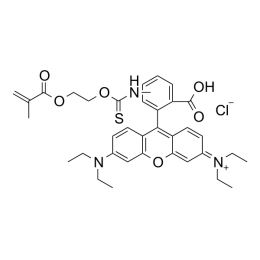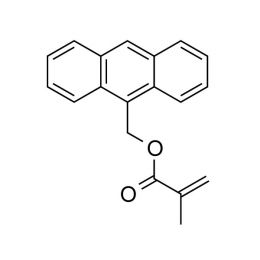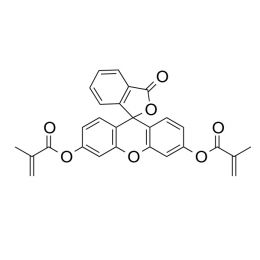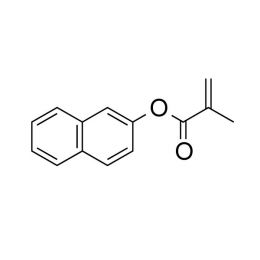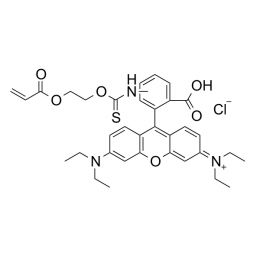Nile Blue Acrylamide
C23H22N3O2CI
Nile Blue dye itself is a fluorescent dye that is used routinely in histology to impart a blue color to cell nuclei, where it highlights the distinction between neutral lipids (triglycerides, etc.) which are stained pink and fatty acids, which are stained blue.
Nile Blue Acrylamide has been used to covalently link Nile Blue dye into the backbone of polymers for use in various sensor applications. Chandrasekharan, et al have developed a plasticizer-free autoclavable ratiometric alcohol sensor based on Nile Blue methacrylamide incorporated into a hydrogel polymer backbone.1 The film formed from the Nile Blue hydrogel exhibits both absorption and fluorescent changes upon contact with ethanol, and the fluorescences Lmax decreases with the increase of ethanol concentration. The sensor can therefore be used to accurately determine ethanol concentration in a system.
In addition, Pham, et al have developed a polymeric nanostructured material incorporating Nile Blue methacrylamide into the polymer, and this material is being developed for the recording of biometric features for anti-counterfeiting applications.2
UV Absorption and fluorescence emission maxima of Nile Blue in different solvents3
| Solvent | Absorptionλλmax (nm) | Emmission λmax (nm) |
| Toluene | 493 | 574 |
| Acetone | 499 | 596 |
| DMF | 504 | 598 |
| Ethanol | 628 | 667 |
| Water | 635 | 674 |
| 1.0 N HCI (pH=1.0) | 457 | 556 |
| 0.1 N NaOH (pH=11.0) | 522 | 668 |
Excitation and emission data is for Nile Blue dye itself.
1. Chandrasekharan, N., Ibrahim, S., Kostov, Y. & Rao, G. Ratiometric Alcohol Sensor based on a Polymeric Nile Blue. Bioautomation 9, 31–39 (2008).
2. Pham, H. H. et al. Polymer nanostructured material for the recording of biometric features. J. Mater. Chem. 17, 523–526 (2007). doi:10.1039/B614491H
3. Jose, J. & Burgess, K. Benzophenoxazine-based fluorescent dyes for labeling biomolecules. Tetrahedron 62, 11021–11037 (2006). doi:10.1016/j.tet.2006.08.056
4. Hasegawa, U. et al. Mannose-displaying fluorescent framboidal nanoparticles containing phenylboronic acid groups as a potential drug carrier for macrophage targeting. Colloids and Surfaces B: Biointerfaces 136, 1174–1181 (2015). doi:10.1016/j.colsurfb.2015.11.011



